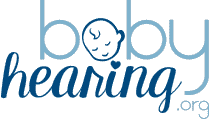Selecting hearing aids for infants and children
Hearing loss can be identified soon after birth. A child with a permanent hearing loss should be evaluated by an audiologist to determine which type of hearing instrument will be most beneficial.
Children who have normal hearing begin using single words at about one year of age. In reality, a great deal of language is learned before children utter their first word. Hearing loss can disrupt language development because learning spoken language largely depends on the ability to hear speech. Hearing aids make sounds and speech audible to the child.
Audiologists usually recommend hearing instruments as soon as possible after a loss is identified. Ideally, an Audiology facility that specializes in serving young children will have a program where a loaner hearing instrument can be selected immediately after a hearing loss is determined. As more complete information about a child's hearing loss is obtained and medical clearance is received, a hearing instrument evaluation can be completed to recommend hearing instruments for purchase. Funding sources may be available to help defray the costs.
Selection and Evaluation of Hearing Instruments
Audiologists may use one of several assessment methods when evaluating hearing instruments for children. Regardless of the technique used, the goal is to enable conversational speech to be heard at a comfortable level. These assessment methods may include:
-
Probe Microphone Testing - During probe-tube microphone testing, a tiny soft microphone is placed in the ear next to the earmold. The amplification provided by the hearing instrument is then measured while the hearing aid is in place in the ear. The measured response is evaluated to estimate the audibility provided by the hearing instrument. Adjustments to the hearing instrument are made as needed.
-
Real-Ear-to-Coupler-Difference (RECD) Measures - In RECD testing a tiny soft microphone is placed in the ear canal next to the earmold in order to measure specific characteristics of the child's ear and earmold. This information then is used to "fine tune" the hearing instrument in a standard test cavity. This procedure is commonly used with infants and young children who may not be able to sit through a longer procedure.
-
Behavioral Testing - Behavioral testing methods can be used to determine the softest level at which a child can respond wearing a hearing instrument. It does not assess benefit at average or loud speech levels and does not assess the maximum power of the aid.
Probe-tube microphone or RECD measurements are usually the methods of choice for fitting hearing instruments for children for several reasons. First, they allow hearing instrument performance to be measured at typical speech levels so that performance in conversational situations can be predicted. Second, they allow direct measurement of the maximum level of sound provided by the hearing instrument to the child's ear. The hearing instrument then can be adjusted to a safe and comfortable level. Third, they provide objective information and can be completed quickly.
Characteristics Considered When Choosing Hearing Instruments
The compatibility of a hearing instrument with assistive devices is also considered, because many children with hearing loss use additional amplification devices, such as Frequency Modulated (FM) Systems. Tamper-resistant battery compartments and the ability to deactivate volume controls should also be available when selecting hearing instruments for infants and toddlers.
Behind-The-Ear Hearing Instruments
BTE hearing instruments can be used with earmolds made of soft material as a safety precaution with physically active children. In general, BTE hearing instruments also require fewer repairs and remakes than ITE hearing instruments. In addition, they are more compatible with assistive devices such as FM systems. Many children with hearing loss will begin using FM systems and other assistive devices as early as 18-24 months of age in order to improve listening in difficult situations.
After the Hearing Instrument Evaluation
The Food and Drug Administration (FDA) recommends a thirty-day trial period with each new hearing instrument. During this time, the hearing instruments should be used as much as possible in everyday situations. The audiologist will monitor hearing instrument adjustment and benefit during the trial period to determine if any adjustments or changes are necessary. Children's hearing and hearing instrument performance should be reevaluated frequently to monitor hearing sensitivity and hearing instrument function. These appointments should be scheduled as recommended by the audiologist.
Identifying hearing loss and finding appropriate hearing instruments for a child is a process that may take weeks or months. Parents play an important part in this process of evaluating and using hearing instrument amplification. They provide valuable information about a child's responses and are critical to their child's successful use of hearing instruments.
Selecting Hearing Aids for Infants and Children
Hearing and Language Websites
Boys Town has created in-depth websites to help parents, caregivers, educators and others caring for children who have been newly diagnosed as Deaf or hard-of-hearing and for individuals of all ages with speech-language concerns.


Hearing Aids
Hearing and Balance
